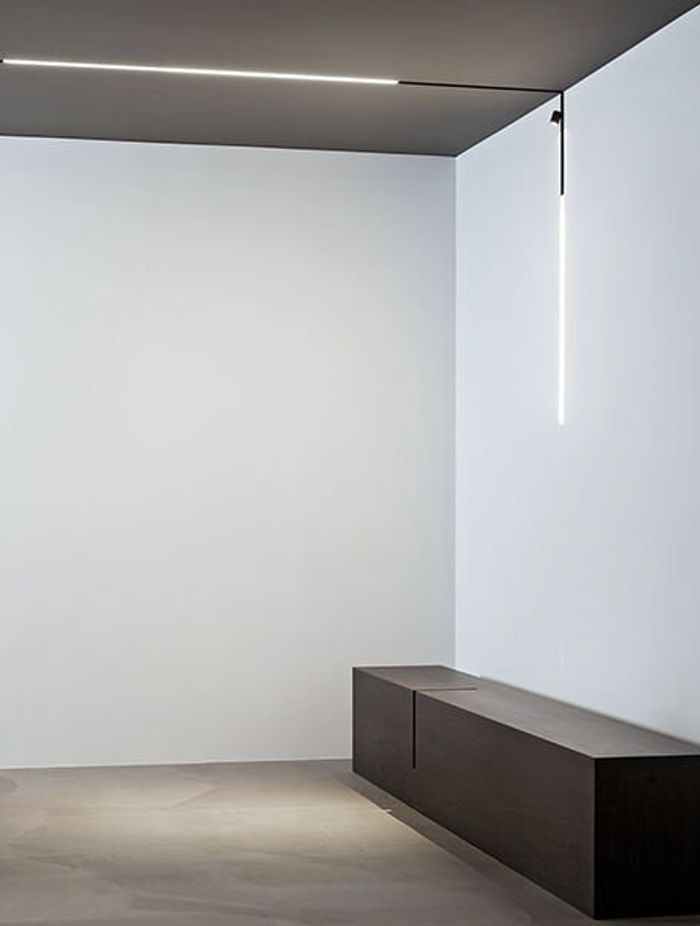Light Years Ahead: The Beauty of LED Lighting and New Architectural Lighting Trends

For those fortunate to be contemplating building, the advance in LED lighting technology is now delivering stunning results when you use the right products and design. Richard Thorburn of ECC discusses innovative lighting systems and other architectural lighting trends to watch.
A systematic approach to lightingFor decades, people have expected to see a certain type of lighting: halogens, incandescent lamps, downlighting and pendants; but this is evolving. As people start to embrace new lighting system trends, concealed and discreet architectural lighting will enhance a space without glare. With these systems, you can build lighting into the architecture itself by using recessed track and light casings that are plastered into the wall or ceiling. “You could almost do a house without downlights,” says Thorburn. “The reduced size of the fixtures and recessed technology means we are building lighting systems into houses.”
This will make it even easier for interior architects to create timeless lighting designs. Feature walls can be lit with a wall-grazing system, to enhance texture. And the technology is incredibly flexible and adaptable to changes in lighting needs: “with magnetic tracks built into the architecture you can clip lights on anywhere and if you change the interior layout or you move a piece of art on the wall, you can adjust the lighting to suit.”

A few years ago, iGuzzini launched a fitting called the Laser Blade. ECC have several installed in the ceilings of their architectural showrooms in Auckland. “I stand people at the back of the showroom and turn the lights on and you can’t actually see where the light’s coming from – it’s quite impressive,” says Thorburn. Thorburn suggests caution, though, because LED lighting systems can easily look flat, when quality products aren’t selected.
The products at ECC have a high colour rendering index (CRI) – an average of CRI 90 across their ranges, as opposed to the 70 or 80 that LEDs started out with. CRI is a measure of how faithfully artificial light renders colours compared to daylight. The higher CRI brings out the textures of timber and fabrics extremely well, as well as naturally representing skin tones.

Mimicking daylight“A lot of people say to me that LEDs are cold, but that depends. There are various types of LED; the technology is quite diverse,” says Thorburn. A big trend in the development of this technology is the ability to change the colour of the LED, either with ‘tuneable white’ or ‘warm dimming’. This creates a viable option for people who dislike even slightly colder lighting. “Traditionally it’s been great for offices; you can come into your office in the morning and have it at a nice warm colour temperature, and then cool it during the day and warm it again towards the evening, mimicking that daylight curve.” For anyone who is curious about seeing the LED lighting systems available, the ECC showroom in Auckland has the lighting set up with individual controls. “People can actually see the effect of the lights and these systems: the concealed LED systems, magnetic systems, wall-washing, warm-dim – we’ve got them built into our showroom.”
Planning for the futureThorburn warns that people often underestimate what is involved with lighting when building, and as a result, they don’t start it early enough. “It should be done in the early stages of planning because it can make a huge difference to a home.” Another feature to consider in the planning stage is home automation. People are generally aware of smart-wiring for their audio and television, but still prefer to control their lighting from a switch on the wall. Even if you aren’t ready for it, advises Thorburn, it is worth getting the cables and wiring in there. It is easier to change things later if you have built-in wiring. “I think in the next 10 years, you’ll see a huge change in the way that you can control lighting systems.” Fortunately, getting this process right is something that ECC can help with. “We advise people on what the best options are and we develop a concept with them, draw it up in CAD and offer them all the information.”
If you’re planning to build or renovate, for best results make sure you plan for the most effective lighting solutions right from the beginning and you can enjoy a timeless design for many years.

